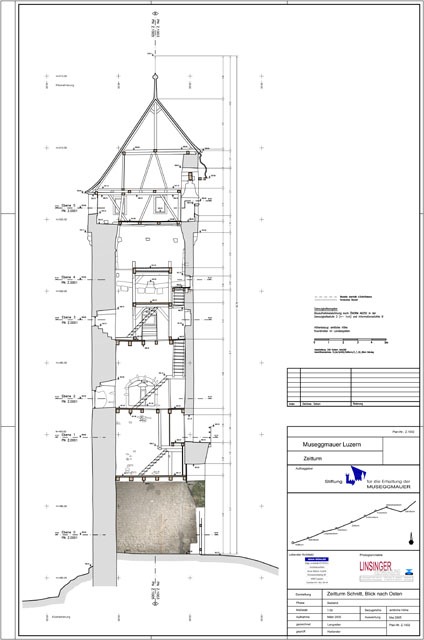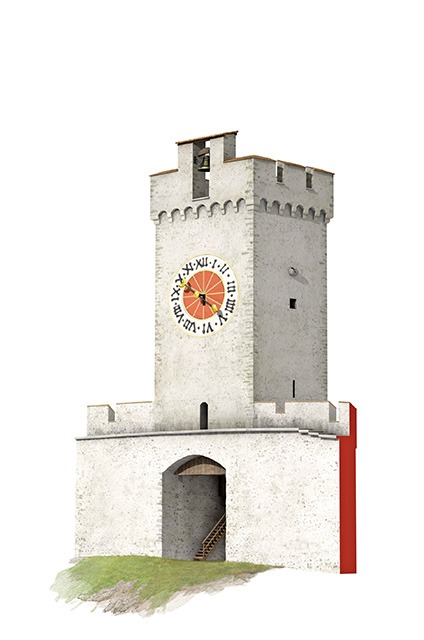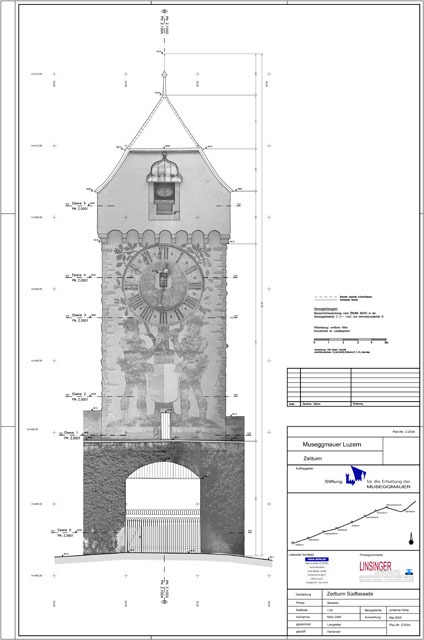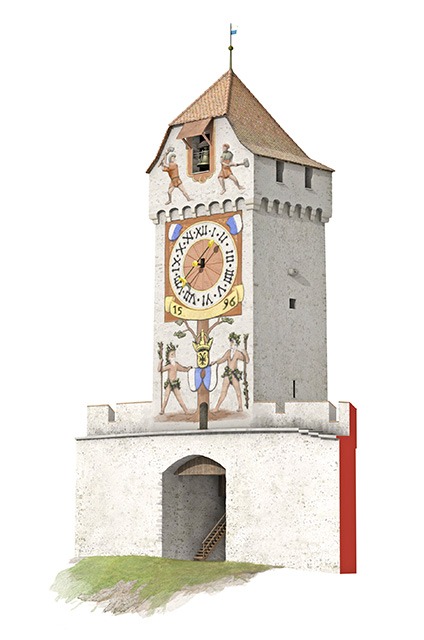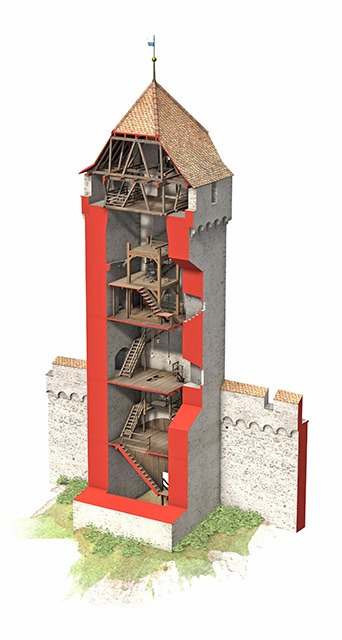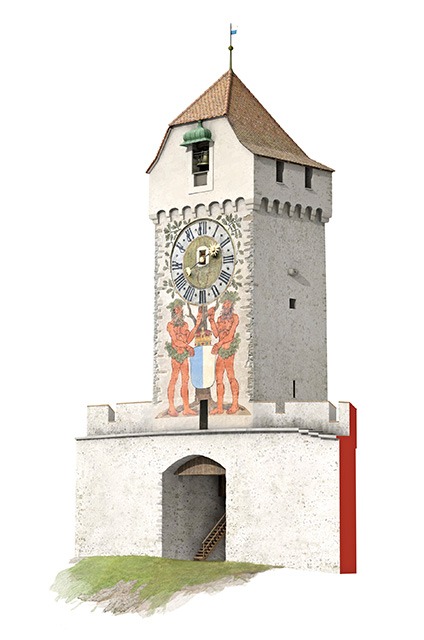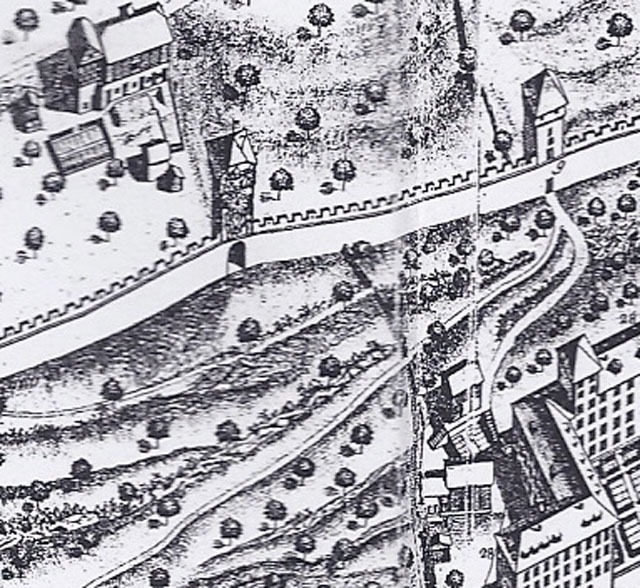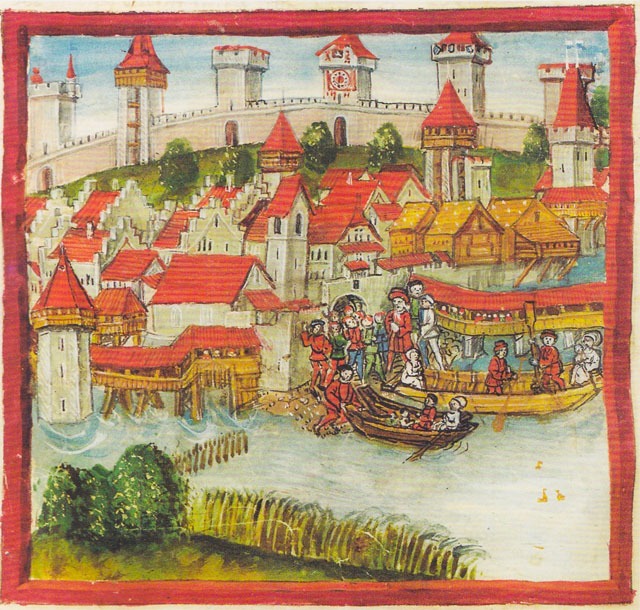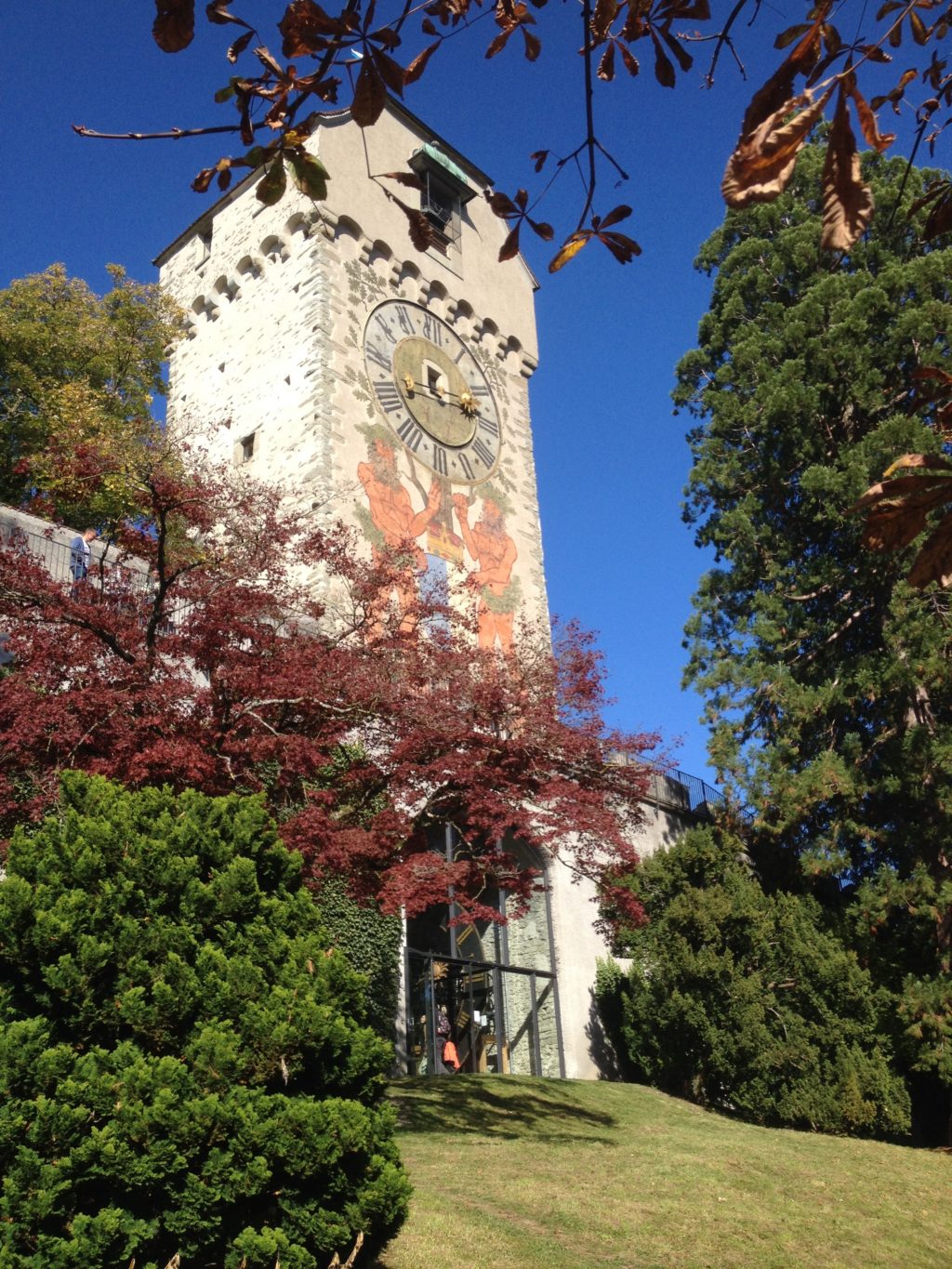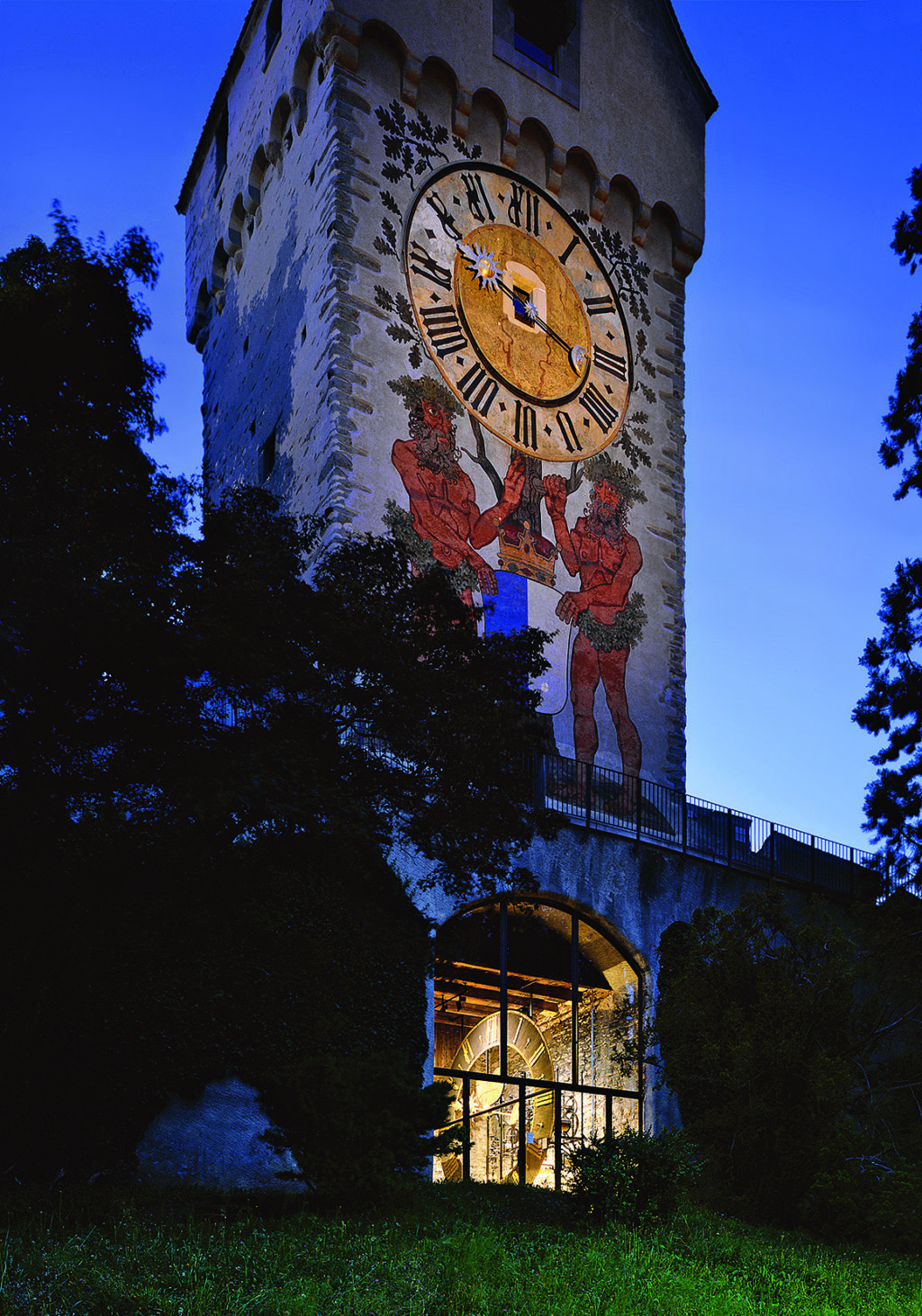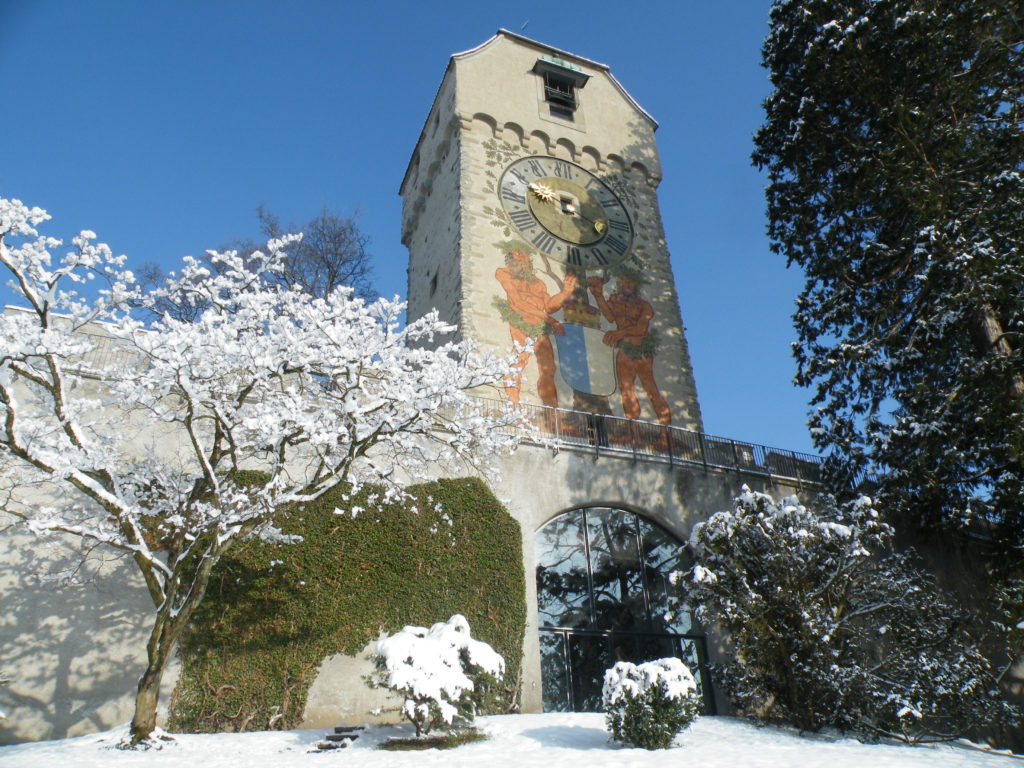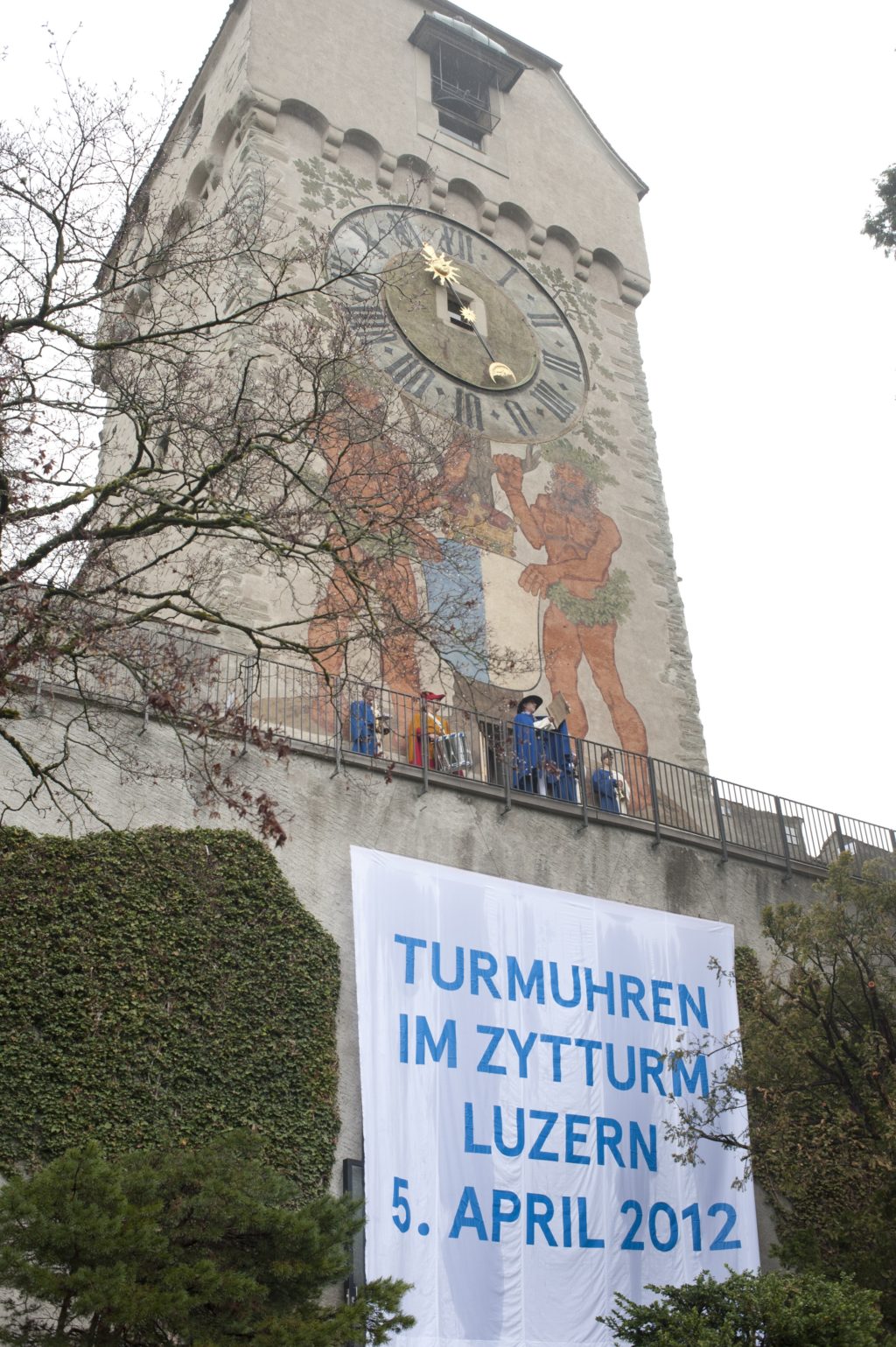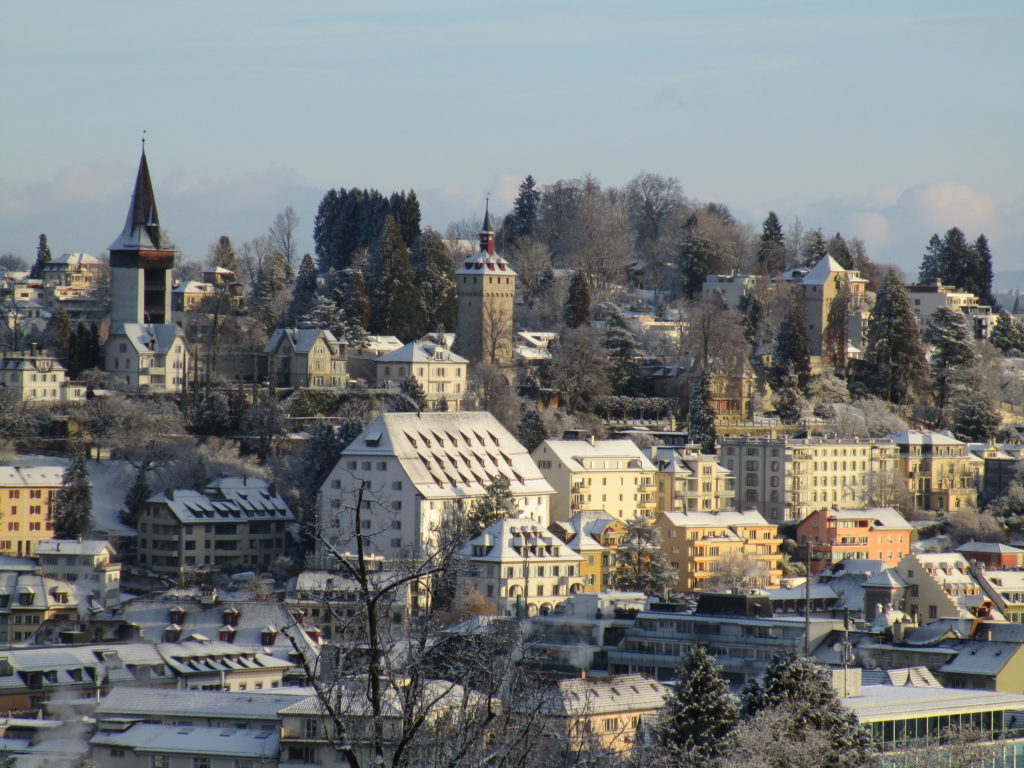
Clock-Tower
The clock-tower was an element of the fortification of Lucerne. The town wall and its nine towers (Nölli, Männli, Luegisland, Wacht, Zyt, Schirmer, Pulver, Allenwinden and Dächli), built between the 14th and 16th century, stood as a symbol for the ever growing power of the City and Republic of Lucerne.
The name Musegg appears for the first time in various documents in the year 1352. The origin of the word „musen” is Middle High German and means to scout (: to look out for). The town wall together with its towers and moats formed the second ring of defence of the city of Lucerne in which the nine towers were situated in the north in front of the town wall. When the mediaeval defences of the town were demolished on the left bank of the river Reuss in the 19th century only these towers together with the outer Weggis tower remained as places of interest. Today the Musegg wall, with a length of more than 800 meters, represents the longest mediaeval defensive works of Switzerland.
The clock-tower was built in the 15th century but the oldest timber used for the platforms can be dated to the year 1403. In 1511 a hip-roof was erected and the tower finally received its actual shape. The clock-tower is therefore older than the Zytglogge tower in Berne. The fresco-painting (1596) on the south façade shows two giants holding the face of the clock.
The clock-tower was the only tower whose purpose was not for defence. Thanks to its big clock-face and bell the people in the city and the boat crews out on the lake could read the accurate time. Still today the stroke of the clock-tower clock is one minute before the chime of the church bells (privilege of first stroke).
In 1579 the clock-tower was hit by lightning and on 16th August 1583 the bell and the clockwork as well as the top platform were hit again. Smoke billowed but the tower as well as the clockwork remained undamaged.
In the 19th century as well as in the beginning of the 20th century the clock-tower was used as storage space for timber. Since 1978 it has been a public view-point.
The actual exhibition in the clock-tower shows ten/nine historic tower-clocks, five/four of them in operation. Here you will find information regarding their history and their engineering features – the development of mechanical clocks started with the construction of tower-clocks in the Middle Ages. The tower-clocks of this exhibition represent the life’s collection of Jörg Spöring, the clock-maker of the City of Lucerne.
The bell
In 1513 an opening in the wall on the south façade was built for the bell. Part of the bell projects beyond the opening as the oak beams of the frame sit on the outer wall. A small canopy over the opening protects the bell and its clapper from the elements.
The first bell of the clock-tower was taken from St. Peter’s Chapel (formerly St. Peter’s Church) on Chapel Square. The bell had an exceptionally beautiful, clear chime and was inscribed in Latin “Anno Domini 1381 fusa est haec campana, sancte Leodegari ora pro nobis” (This bell was founded in the year of the Lord 1381, St. Leodegar pray for us.). In 1788 the bell was moved to the cathedral (Collegiate Church of St. Leodegar in the Cathedral ward) and in the same year a new bigger and heavier bell was put in the clock-tower. This bell has a diameter of 127 cm and weighs over a ton. The inscription on the outside depicting the crucifixion and the coat of arms of Lucerne reads: „Master Nicolaus Dürler the present builder of Lucerne | Heinrich Sutermeister founded me in the year 1788”.
The bell strikes one minute before the chime of the church bells in Lucerne. In 1385 the city council decreed the so called privilege of first stroke for the public clock. The privilege to strike the hour first was transferred from the clock in the Graggen tower in the Halde ward to the Luter clock in the clock-tower. This privilege is a sign of the self-consciousness of the city: Whoever is master of time, is master of territory and life therein.
Painting on the façade
In 1511 the painting on the façade was copied for the first time by the town clerk Diebold Schilling in his chronicle. It shows two red men holding bell clappers standing on both sides of the opening in the wall and the clock-face with two giants (: wild men). The giants were the symbol of strength and power of the soldiers and mercenaries of Lucerne. In 1547 the tower was redecorated in fresco technique. In 1596 the fresco was renewed by Joseph Moser and in 1939 Karl F. Schobinger (1879–1951) designed the actual painting on the façade where the two giants still hold the coat of arms of Lucerne.
Schobinger was a pupil of Ferdinand Hodler in Geneva. From 1911 to 1914 he taught the art of painting at the academy of arts in Breslau (today: Wroclaw / PL).
